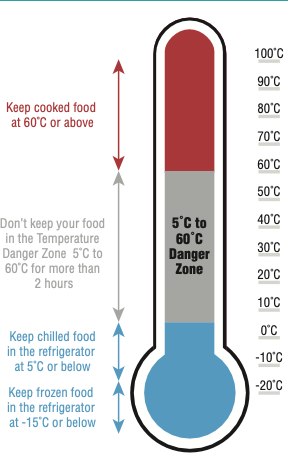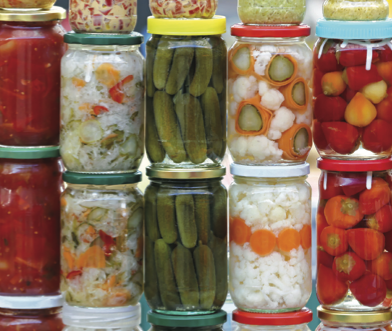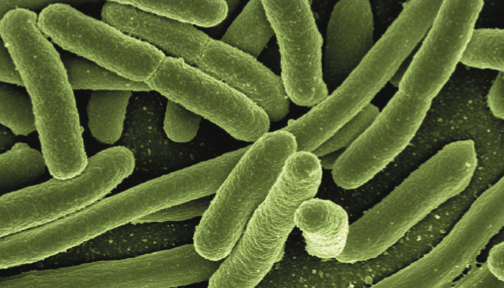Making your food stocks last longer is useful, but make sure you take the necessary precautions writes Brigitte Cox.
Food poisoning is rare; even so one in five Australians can expect to get food poisoning each year.
We think of food poisoning bugs just giving us a nasty bout of ‘gastro’, which is true in most cases; but it can be much worse. The worst outcome is death, but polyarthritis, Guillain-Barré, Reiter’s syndrome, kidney damage and meningitis are some of the very rare, but also very nasty consequences of food poisoning.
You do not want to be one of those cases when you are out on a yacht. But let us be more positive and discuss how we can minimise the risk in situations where you have to store food for a long period of time on a cruise and yet still eat safe and nutritious meals.
Handling and preparation
Your food handling practices have a great effect on food safety. Ensuring that your refrigerator is operating at five degrees Celsius or less is a good start; so it is a good idea to get a fridge thermometer.
If you do not have a fridge on board and are using an esky or a portable fridge, make sure that the food you add is already at five degrees or less. Those items are not designed to cool food but used to hold already-cold food cold for a while.
If necessary add some other items to fill the container: a full container of cold items will hold the cold longer than a half full container. You can make large ice bags by filling empty cask wine bags with a brine solution of 60 grams of salt for every litre of water and freezing it. This will freeze at about minus four degrees and keep your Esky cold a little longer.
The old saying ‘cleanliness is next to godliness’ is not far wrong. How clean you keep your galley, utensils, chopping boards and knives and, of course, your hands will have a huge impact.
Cross-contamination of bacteria and viruses comes from raw foods and dirty surfaces and equipment or dirty hands. So, make sure that you wash your dishes and utensils in hot water with detergent.
If you have used an item for a raw food, for example a chopping board, a knife or even a vegetable peeler, wash and dry it before using it again for ready-to-eat foods like salad vegetables or cooked meats. Preparing salads and ready-to-eat foods first then putting them back into the fridge before handling and preparing raw meats, can minimise the risk of cross-contamination occurring.
Cross contamination can also occur if you store raw foods next to or above ready-to-eat foods. Always keep raw foods and ready meals well separated and covered. Store ready to eat food in the refrigerator or esky above raw meat, poultry and seafood so raw meat juices cannot drip onto the ready to eat foods.
Hand washing is a must in a kitchen. Whether you use hot or cold water is not as important as rubbing your hands, including between your fingers and your fingertips, with soap to remove any bugs and then rinsing them thoroughly. Drying your hands well is also important because germs from surfaces can be transferred onto wet hands very easily.
You should do this before preparing food and after handling raw meat or seafood and any vegetables with dirt on them.
Storage
When cooking meat or poultry it should be cooked properly.
By all means cook solid, individual pieces of meat, which have not been mechanically-tenderised, such as steak to the rare stage if that is what you prefer. However: mince dishes, rolled roasts, sausages, livers, mechanically- tenderised poultry should all be cooked to a centre temperature of 75 degrees and this should be tested with a thermometer.

When finished cooking, food needs to be refrigerated so it cools quickly through the danger zone. Diagram – Brigitte Cox.
Eggs also need to be properly cooked and should be cooked to 71 degrees. Unless you can get hold of pasteurised egg it is best to avoid using raw egg in salad dressings, bakery items unless the egg will be cooked, eggnogs or mousses.
The safest foods to take on-board are the shelf-stable foods that you can buy in a supermarket, for example canned and dried foods. Canned foods have been heat treated to kill the deadly germs that could make the product unsafe. Any air has also been removed and that protects some of the vitamins that would be destroyed if air was in the product.
Contrary to some beliefs, canned foods are nutritious and can actually preserve some vitamins better than they would be as fresh product in storage.
Canned foods can be safely stored for many years but, over time, their sensory and nutritional value will decline. Eighty-year-old cans of food from Mawson’s hut in Antarctica were examined by CSIRO and were found to be still free of bugs; even though you would not eat the food because it looked brown and unappetising.
So, you can use canned food after its ‘best before’ date. The date tells you that the quality may have declined after this date.
Home preserving is more popular today but if you wish to do home preserving you need to be careful what you preserve and how you do it. Clostridium botulinum, which causes botulism and can be
fatal, can survive heating to very high temperatures, up to 120 degrees.
Even if you use a pressure cooker, if it does not have a pressure gauge which reads up to 104 kilopascals per inch (or 15psi) you should never attempt to preserve certain foods. Even with a gauge you need to get advice on how long to heat the product and at what pressure it should be cooked from a reputable source, not a cookbook or recipe written by a non- qualified person.
Preserving tips
Unless you are preserving acidic fruits do not try to preserve foods like vegetables, meat, fish or low acid fruits. Do not preserve most tropical fruits: bananas, pawpaw, mango, melons, or tomatoes without adding at least 50 per cent vinegar to the liquid or, in the case of tomatoes, two tablespoons of lemon juice or half a teaspoon of citric acid to each litre of liquid.
Jams and pickles are quite safe to make at home or even in the galley. It is best to use glass jars with metal lids if you do not have the special sterilising jars. You must use a new rubber gasket to seal the preserving jars each time you make a batch. There is no need to sterilise the jars first.
It is better to heat the vinegar and vegetables or syrup or water and acid fruits using a thermometer to about 90 degrees first, then add the hot mixture to the jars. Use your thermometer to check that the temperature of the last jar filled is above 85 degrees, immediately close the jars with the lids and turn the jars upside down for about three minutes to sterilise the lid.

The hot liquid sterilises the jar for you. Cool the jars at room temperature and you should hear the lids pop after a time as the vacuum forms in the jar. You must be careful to ensure there is no food around the top of the jar before closing otherwise germs can get wicked into the contents.
You can also preserve vegetables and herbs in oil, but you must first soak them overnight in vinegar to increase their acidity so that they remain safe.
Some people believe that garlic, because it has some antimicrobial properties, is safe to preserve in oil. That is incorrect. Clostridium botulinum, does not need air to grow, in fact it grows best when no air is present, something the North Americans discovered in the 1980s when two serious outbreaks of botulism occurred from jars of garlic preserved in oil.
It is the acid level of the food that stops this bug from growing, not the oil or inherent characteristics of the food. The disadvantage of adding acid is that the green chlorophyll in the herb or vegetable will turn an olive green colour but it is better to be safe than sick.
Herbs can also be used to make flavoured vinegars which add variety to foods. Once any of the above preserved foods are opened they must be eaten or refrigerated and treated like a fresh food.
Dried foods also have a long shelf life. Commercially dried foods can also be kept some time past their ‘best before’ date. You can dry your own fruit or vegetables but it is best to dip the food into an antioxidant solution like ascorbic acid for ten minutes before drying.
You should use about half a teaspoon of acid powder in two cups of water to help maintain the appearance and the vitamin content of the food. If you do not want to pre-treat vegetables or fruit they will have a much shorter shelf life and lose some of the nutritional value.
There is a risk of food poisoning bacteria growing before the food is properly dried. Unless you heavily salt meat, poultry or fish and soak it in vinegar before drying, avoid drying these foods yourself and buy commercial products from reputable sources. The risk of getting it wrong are too high.
Do not try to dry your foods too quickly as you will form an impermeable layer on the surface and interior water will be trapped inside causing the food to go mouldy later on. Your fruit is dry when you can not squeeze out any beads of moisture when pressing and vegetables are crisp, tough or brittle. Then store the dried product in an airtight container and rehydrate as required. Once rehydrated, dried food must be eaten or refrigerated just like any fresh food.

Some people suggest that you sprout seeds as a fresh addition to the diet. If you do so be aware that conditions required to grow sprouts are the same conditions that food poisoning bacteria need: warmth and moisture.
The seeds may be contaminated with food poisoning bacteria when you buy them and so you need to ensure that any equipment you use is thoroughly cleaned between batches and the sprouts are kept refrigerated after they are grown.
Following these suggestions will not guarantee that you won’t get food poisoning but they will go a long way to reducing the risk. So let’s hope that any queasiness you might feel is a result of seasickness and not food poisoning.
Brigitte spent most of her working life at CSIRO working with the food industry, start-up businesses and the public on various aspects of food technology, especially food safety. She has conducted many food safety courses for the food manufacturing and food service industries. Brigitte contributed to various CSIRO food safety projects and, after retiring, worked for Qantas Airways in a team managing the safety of airline food. Currently Cox is an Honorary Fellow at CSIRO.

























